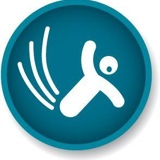Information
-
Document No.
-
Conducted on
-
Hospital
-
Ward
- Medical
- Surgical
- ICU
- HDU
- Paediatric
- Maternity / Neonate
- Rehabilitation
- Palliative
- Aged Care
-
Bed number
-
Acknowledgement: Based on the Queensland Health paper tool available at www.health.qld.gov.au
-
This audit collects patient level data on a ward/unit. Start a new audit for each patient audited.
If an unwanted media field opens, tap the relevant question to close it.
Please maintain patient confidentiality at all times.
Observational audit - patient
-
Which type of bed rail is present on the bed? (Note: only check where a patient is present.)
- N/A
- Bed not present
- No bed rail
- Split - both rails up
- Split - half rail up
- Rails up
- Rails midway
- Rails down
-
Is the nurse call system within reach of the patient?
-
Is the bed control (if bed has a control) within reach of the patient?
-
Is the patient's bed at the appropriate height? Note: Appropriate height is the level that the patient can sit and touch the floor with their feet, with their legs at 90 degrees.
-
Are the patient's bed brakes locked on?
-
Is the patient's chair at the appropriate height?
-
Is the patient's room free of clutter / other hazards?
-
Is the patient's tray table within reach?
-
If the patient has sensory aids (eg glasses, hearing aid) are they within reach?
-
Does the patient have appropriate footwear? (Eg non-slip / well fitting / low heel)
-
If patient is at risk of falling, are they within view of and close to the nursing station? (Risk is determined below.)
-
If "no" responses are obtained, advise Nurse so that the problem can be promptly rectified.
Documentation audit - patient
-
Is there documented evidence at the bedside that the patient was screened for a history of falling on admission?<br>(Note: screening identifies if the patient is at increased risk of falling and then should be assessed at admission.)
-
Is there documented evidence at the bedside that the patient was assessed for risk of falling on admission?
-
What is the patient's documented risk of falling?
-
What type of bed is the patient in?
-
If the patient is at risk of falling, have they been reviewed by the Physio / OT?
-
Which one?,
-
Is there documented evidence at the bedside that there is a multifactorial falls prevention plan (FPP)?<br>(Ie documented actions corresponding to identified risk factors.)
-
What type of bed is the patient in?
-
Is there documented evidence at the bedside of the level of supervision / assistance required for mobilisation in the patient's care plan? (Red dot system.)<br>(N/A for patients that can mobilise independently.)
-
Is there documented evidence at the bedside that the patient's care plan includes the use of a mobility aid?<br>(N/A for patients that can mobilise independently.)
-
Is the mobility aid within arms reach of the patient? (Patient refuses to use aid = PRTUA)
-
Does the patient have documentation at the bedside (ie in the care plan) that an assessment has been undertaken for continence and continence aid requirements?
-
Has the discharge process commenced?
-
Have referrals to appropriate primary health providers / community services been organised?
-
To whom - select all applicable options
- Physio
- OT
- Dietitian
- Nutritionist
- AH Asst
- Nursing Home Placement
- HACC
- Other
-
Specify what other referrals have been made.
-
Is there evidence that the patient has experienced a fall while in hospital?
-
Is there evidence the incident has been entered into the incident management system (EIMS)?
-
Report to NUM to ensure incident is recorded.
Patient Questions
-
Patient Q: We're you shown around the bed area, room and ward/unit facilities on admission?
-
Patient Q: Did you have an education session with a staff member on how you can prevent falls?
-
Which form of education did you receive?
- Patient education brochure
- Safe recovery workbook
- Viewed DVD
- Discussed with staff member
- Other - specify below
-
Patient Q: Were you involved in the development of plans to prevent you falling while in hospital?
-
If you have identified a patient risk related to bed or surrounds, please photograph here (do not include any patient faces in the photo).
-
Auditor please enter your name and sign off here














